Cincinnati's Rockdale Temple has defined American Jewish life for 200 years
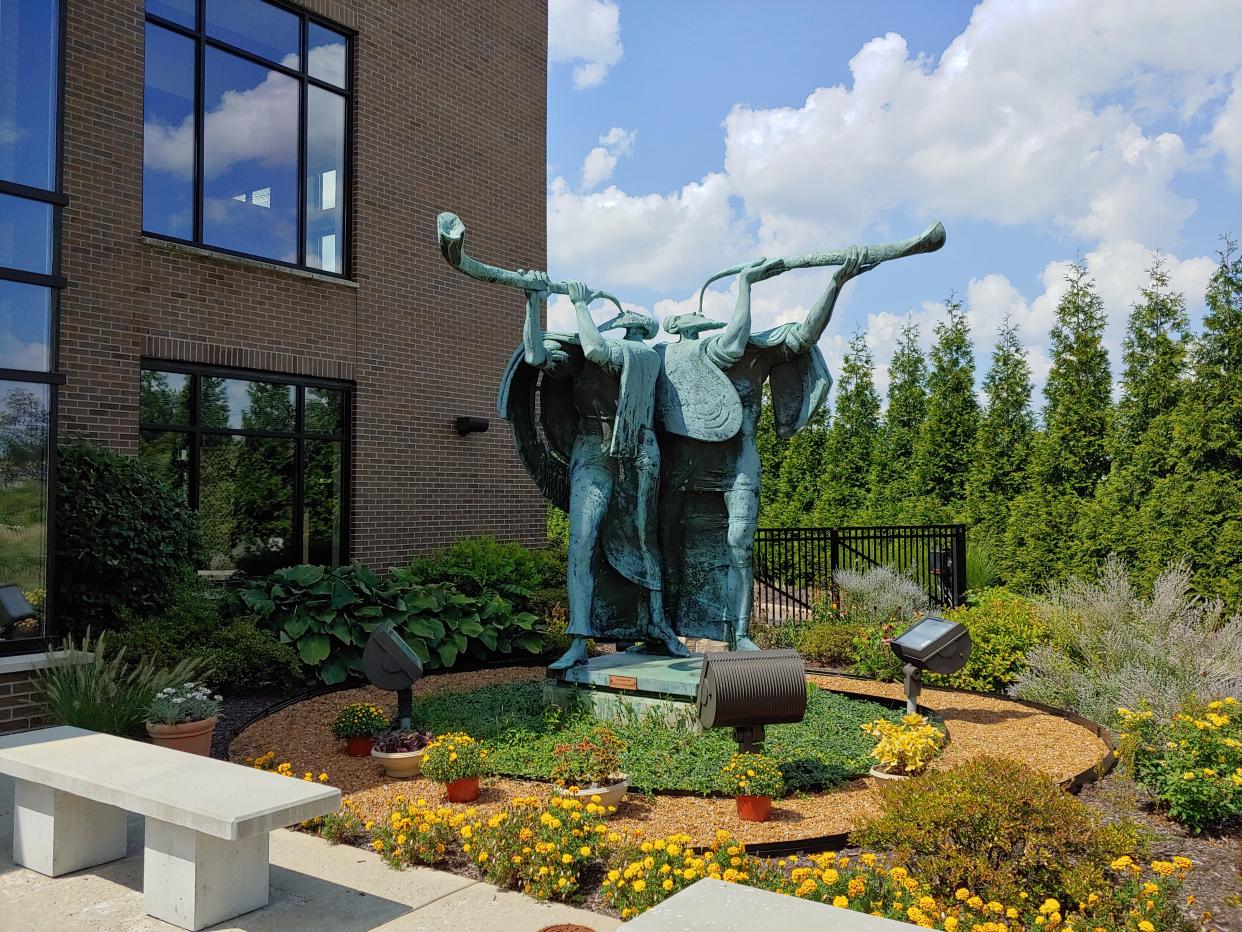
- Oops!Something went wrong.Please try again later.
- Oops!Something went wrong.Please try again later.
- Oops!Something went wrong.Please try again later.
Rockdale Temple is celebrating its 200th anniversary this year. It’s the oldest Jewish congregation west of the Allegheny Mountains, and according to historians, either the eighth or ninth oldest in the U.S.
That’s also a milestone few Cincinnati institutions can boast yet. Rockdale is older than the Cincinnati Reds, Music Hall and Fountain Square. When Rockdale Temple was founded in 1824, there were only 24 states in the Union. James Monroe was president.
“This congregation has survived the Civil War, two world wars, more than one global pandemic. We’ve just been around for so long,” said Rabbi Meredith Kahan, senior rabbi of Rockdale Temple, during a tour last month of the temple on the Mayerson JCC campus in Amberley Village.
Our History: Cincinnati’s historic anniversaries of 2024, from tornadoes to boxing titles
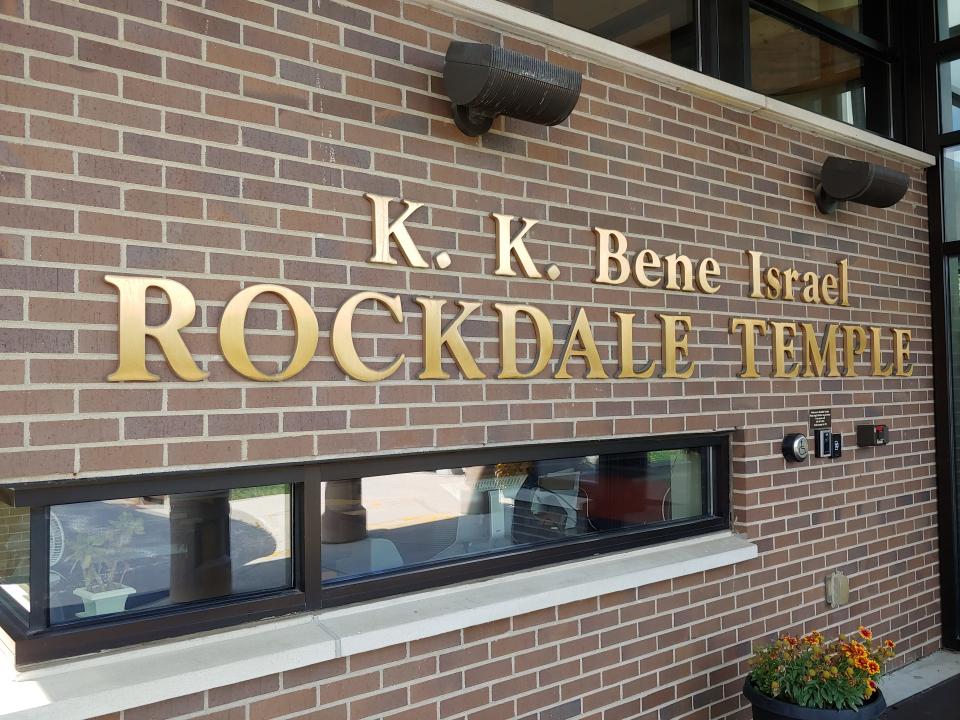
Rockdale Temple has already begun celebrating its bicentennial year, but the biggest events are next weekend, including a gala on Saturday, Jan. 27.
The tagline for the anniversary celebration is “200 years of living Jewish values.”
Rockdale has had an impact on Cincinnati's history but also in the history of Judaism in America.
“When we talk about the founding and growth of organized Jewish life here in the United States, Rockdale Temple has a really significant place,” Kahan said.
Early Jewish settlers founded the congregation in 1824
Joseph Jonas was the first Jewish resident of Cincinnati, coming from England in 1817 when the Queen City was still a frontier river town. Jonas is considered the “founding father” of the Jewish community in Cincinnati.
In 1821, the handful of Jewish settlers purchased a plot of land for a cemetery to bury Benjamin Lape, who was Jewish by birth and had lived as a Christian but requested burial by the rites of the Jewish faith on his deathbed. That became Chestnut Street Cemetery, off Central Avenue in West End.
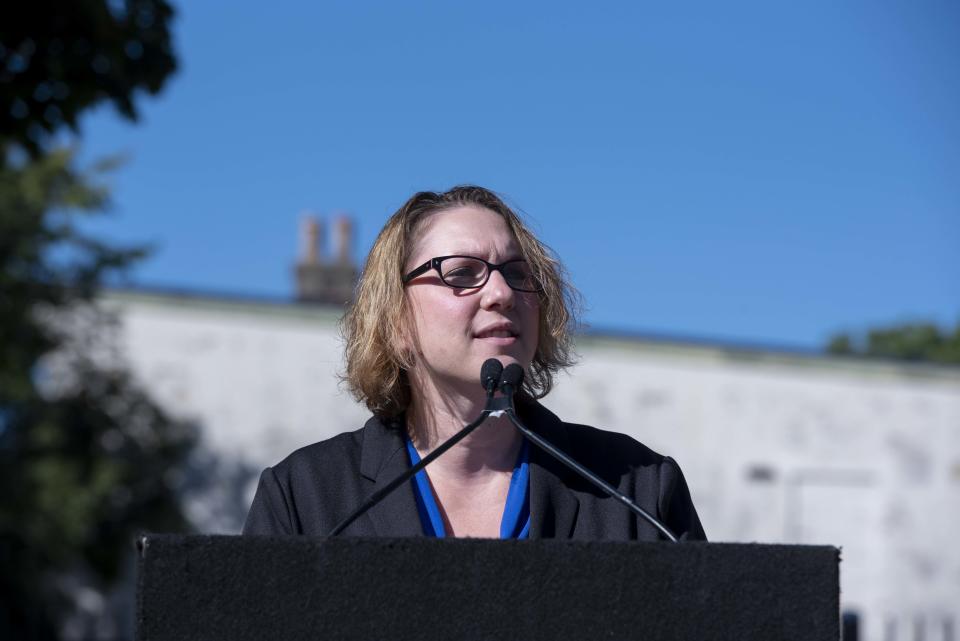
“By Jewish law, the first thing you establish is the cemetery, then you establish a school. The congregation comes later,” Kahan explained. “So, the cemetery predates the congregation, but the people who built the cemetery were the people who became the congregation.”
On Jan. 18, 1824, Jonas gathered those early Jews at the home of his brother-in-law, Morris Moses, and organized the first Jewish congregation in the city, officially named K.K. Bene Israel (Holy Congregation of Children of Israel), but today known as Rockdale Temple.
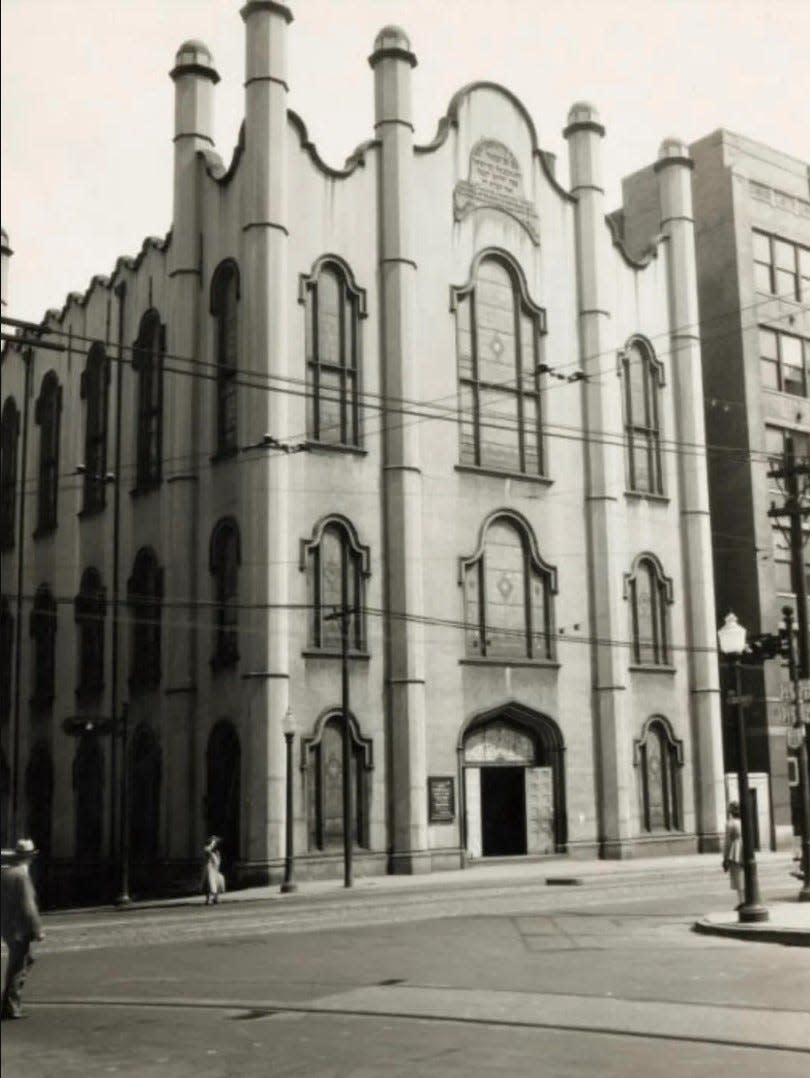
The congregants met at people’s houses until their first synagogue, Broadway Street Temple, was built at Sixth and Broadway streets in 1836. It was replaced by a second synagogue, this one done in a distinctive Moorish style, on the same site in 1852.
Meanwhile, as Cincinnati’s population boomed, the number of German Jewish immigrants did as well. A second congregation, K.K. B’nai Yeshurun, was founded in 1840. Today, it is known as Wise Temple.
Rabbis Isaac M. Wise and Max Lilienthal led American Reform Judaism
“The history of Bene Israel, indeed of Cincinnati Judaism as a whole, changed in 1854 with the appointment of Isaac Mayer Wise as rabbi of B’nai Yeshurun,” Jewish scholars Jonathan D. Sarna and Karla Goldman wrote in a chapter on Rockdale Temple in the book “American Congregations.”
Wise, born in Bohemia and trained in Germany, came to Cincinnati with plans to modify Judaism in America, and spearheaded what became known as American Reform Judaism.
The following year, Bene Israel hired Max Lilienthal, another modern rabbi from Munich and a friend of Wise, as the congregation’s first permanent rabbi.
“Wise leaned on Lilienthal to really support a lot of his work,” Kahan said.
As Sarna and Goldman described the situation, the two worked hand in hand to liberalize American Judaism. While Wise was concerned about building the institutions of the Jewish community, Lilienthal worked with politicians, secular leaders and interfaith leaders. Lilienthal was credited as the first American rabbi to preach from a church pulpit.
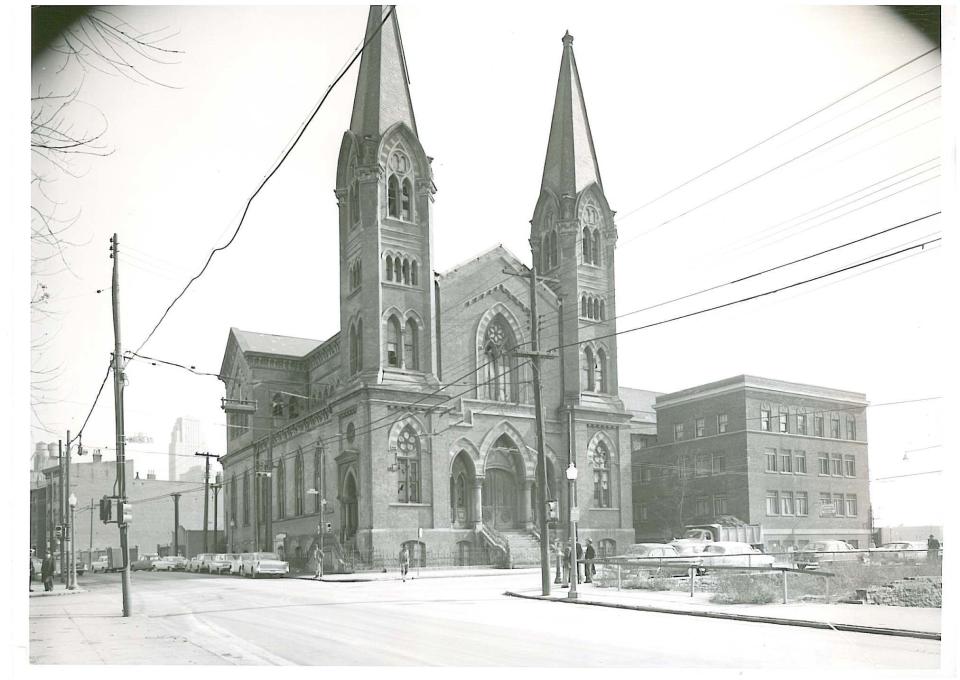
Famed reporter Lafcadio Hearn wrote about Lilienthal in an 1874 Enquirer article, calling him “our most venerable rabbi”: “He is very jovial, even for so jovial and pleasant a class of religious teachers as our Rabbis. He is of medium stature, but full of vigor and energy. His manner is hearty, frank to bluntness, and ever courteous; while his features denote energy rather than executive ability, and good-nature rather than keenness of observation.”
Bene Israel moved to Mound Street Temple at Sixth and Mound streets in West End in 1870, while the old Broadway Street building was sold to the Allen Temple AME Church. (Allen Temple was torn down in 1979 to make way for Procter & Gamble’s headquarters expansion.)
When Wise founded Hebrew Union College in 1875, the first classes were held in the basement of Mound Street Temple. Lilienthal was one of the first teachers. (The building was torn down about 1960 for construction of Interstate 75.)
They called it Rockdale Temple and the name stuck
Bene Israel moved again in 1906 to a Neoclassical building noted for its Corinthian columns and arched stained-glass windows at Rockdale and Harvey avenues in Avondale. That was the congregation’s home for six decades.
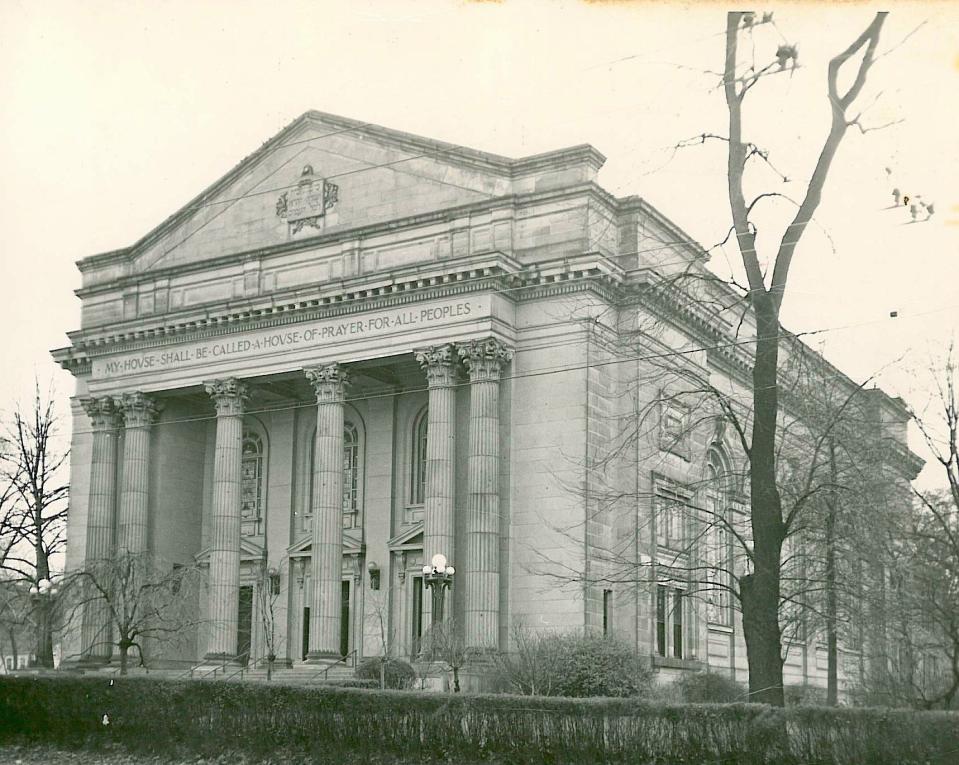
Poet Robert Frost, a close friend of Rockdale’s Rabbi Victor E. Reichert, gave a sermon there in 1946.
“Eventually it started to be called sort of colloquially the Rockdale Avenue Temple and that stuck,” Kahan said.
The congregation began plans in 1964 to move north to Amberley Village to be closer to where the members lived. Avondale had shifted from a predominately Jewish neighborhood to a mostly Black neighborhood. Then, racial riots broke out in Avondale in 1967 and 1968, and the temple building was abandoned.
For the dedication of the new synagogue on Ridge Avenue in 1969, jazz musician Dave Brubeck was commissioned to compose his cantata, “The Gates of Justice,” a call for brotherhood between Black and Jewish people in the wake of racial tension.
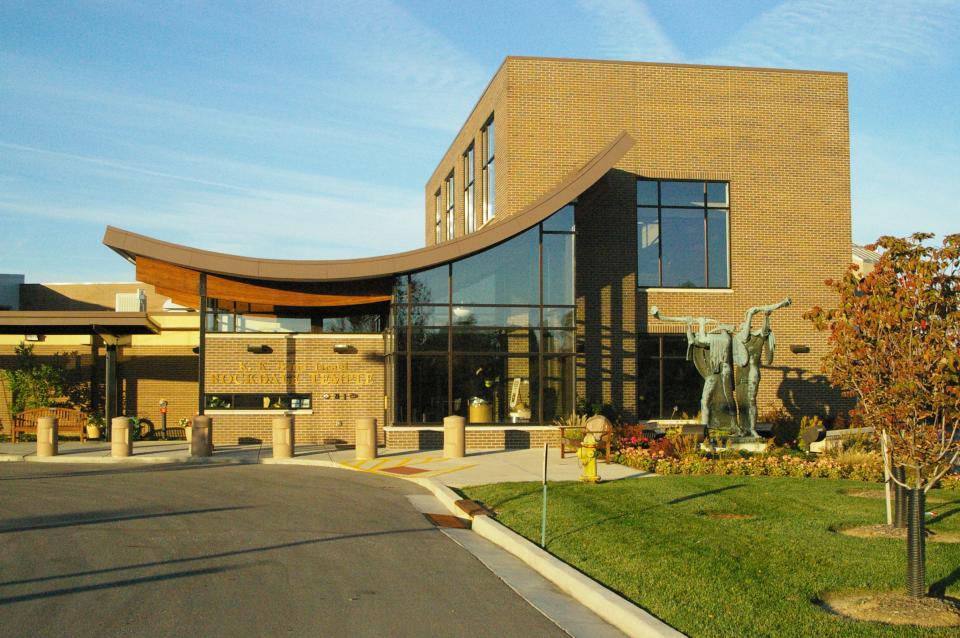
Even though the congregation left Rockdale Avenue, the name came with them.
“They had been calling it the Rockdale Temple for 60 years and they were attached to that,” Kahan said.
Kahan is only the 10th senior rabbi in Rockdale’s 200-year history. She was selected for the position in May 2021 after the death of her predecessor, Rabbi Sigma Faye “Sissy” Coran, who was Rockdale’s first female rabbi.
(Incidentally, another Jewish milestone in Cincinnati: Sally Priesand became the first female rabbi in the U.S. and second in the world when she graduated from Hebrew Union College in 1972. In 2022, of the 2,200 members of the Central Conference of American Rabbis, 810 were female, Hadassah Magazine reported. And where did HUC start, again? K.K. Bene Israel’s basement.)
Female clergy is just one way that Rockdale Temple is adapting to the times. They have been a forward-looking congregation since 1824.
“We’ve been here for 200 years, we’re proud of that, we’re proud of our story,” Kahan said. “And it only matters because we are still here and we’re working really hard to ensure another 200 years of the congregation.”
This article originally appeared on Cincinnati Enquirer: How Cincinnati's Rockdale Temple defined American Jewish life

